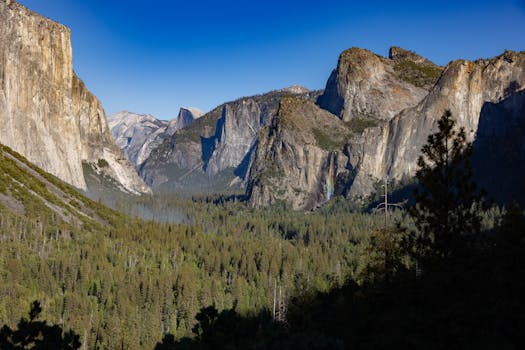Table of Contents
- Exploring Alternative Transportation Options for Remote Trailheads
- Hiking Essentials: What to Pack for a Car-Free Adventure
- Navigating Public Transportation to Reach Remote Trailheads
- Biking Trails: A Sustainable Approach to Accessing Remote Areas
- Sharing Rides: Carpooling for Eco-Friendly Trailhead Access
- Trailhead Shuttle Services: Convenient Solutions for Car-Free Hikers
- Planning a Multi-Day Hiking Trip without a Car
- Overcoming Challenges: Tips for Accessing Remote Trailheads on Foot
- Embracing Adventure: Exploring Remote Trailheads with Public Transportation
- Q&A
“Unlock the Great Outdoors: 6 Tips for Car-Free Adventures to Remote Trailheads”
Introduction:
Accessing remote trailheads without a car can be a challenge for outdoor enthusiasts who rely on public transportation or prefer not to drive. However, with careful planning and a bit of creativity, it is possible to reach these trailheads and embark on your hiking adventures. In this article, we will provide you with six tips to help you access remote trailheads without a car, allowing you to explore the great outdoors even if you don’t have access to private transportation.
Exploring Alternative Transportation Options for Remote Trailheads
Exploring Alternative Transportation Options for Remote Trailheads
Accessing remote trailheads without a car can be a challenge, but it is not impossible. With the increasing popularity of outdoor activities and the desire to reduce our carbon footprint, finding alternative transportation options to reach these trailheads has become a necessity. In this article, we will provide you with six tips on how to access remote trailheads without a car.
1. Research Public Transportation Options
The first step in accessing remote trailheads without a car is to research public transportation options. Many cities and towns have bus or train services that can take you close to your desired trailhead. Look for routes that pass by or near the trailhead and check the schedules to ensure they align with your hiking plans. It is also important to consider the return trip, so make sure there are transportation options available when you plan to finish your hike.
2. Utilize Ride-Sharing Services
Ride-sharing services have become increasingly popular in recent years, and they can be a great option for accessing remote trailheads. Apps like Uber and Lyft allow you to request a ride to your desired location, making it convenient and efficient. Additionally, some ride-sharing services offer options for larger groups or even shared rides, which can help reduce costs and environmental impact.
3. Join a Hiking Group or Club
Another option for accessing remote trailheads without a car is to join a hiking group or club. These groups often organize trips to various trailheads and provide transportation for their members. By joining a group, you not only gain access to transportation but also the opportunity to meet like-minded individuals who share your passion for hiking.
4. Consider Cycling
Cycling to remote trailheads can be a fantastic alternative transportation option. Not only does it provide a great workout, but it also allows you to enjoy the journey to the trailhead. Many trails have bike racks or designated parking areas where you can securely lock your bike before starting your hike. Just make sure to plan your route carefully, considering factors such as distance, terrain, and safety.
5. Rent a Car or Hire a Shuttle Service
If public transportation or ride-sharing services are not available or convenient, renting a car or hiring a shuttle service may be your best option. While this may not be the most environmentally friendly choice, it can be a practical solution, especially if you are traveling with a group or have specific time constraints. Make sure to compare prices and availability before making a decision.
6. Explore Local Trailhead Access Programs
Lastly, it is worth exploring local trailhead access programs. Some areas have initiatives in place to promote alternative transportation to remote trailheads. These programs may include shuttle services, bike rentals, or even designated pick-up and drop-off points. Researching and utilizing these programs not only helps you access the trailhead but also supports sustainable transportation initiatives.
In conclusion, accessing remote trailheads without a car is possible with the right planning and research. By exploring public transportation options, utilizing ride-sharing services, joining hiking groups, considering cycling, renting a car or hiring a shuttle service, and exploring local trailhead access programs, you can enjoy the beauty of remote trails while minimizing your environmental impact. So, lace up your hiking boots, grab your backpack, and embark on your next adventure using alternative transportation options.
Hiking Essentials: What to Pack for a Car-Free Adventure
6 Tips for Accessing Remote Trailheads Without a Car
When it comes to embarking on a hiking adventure, accessing remote trailheads without a car can be a challenge. However, with the right planning and preparation, it is entirely possible to reach these destinations using alternative modes of transportation. In this article, we will provide you with six essential tips for accessing remote trailheads without a car, ensuring that you can enjoy a car-free adventure with ease.
1. Research Public Transportation Options
Before setting off on your hiking expedition, it is crucial to research the public transportation options available in the area. Many remote trailheads are accessible by bus or train, and knowing the schedules and routes will help you plan your journey effectively. Check online for local transportation websites or contact the local tourism office for up-to-date information. By familiarizing yourself with the public transportation options, you can ensure a smooth and hassle-free journey to the trailhead.
2. Utilize Ridesharing Services
In recent years, ridesharing services have become increasingly popular and can be a convenient option for accessing remote trailheads without a car. Platforms like Uber or Lyft often operate in rural areas, allowing you to book a ride to your desired trailhead. Additionally, some hiking communities have created specific ridesharing groups or forums where hikers can connect with drivers heading to the same destination. By utilizing ridesharing services, you can enjoy the flexibility of reaching remote trailheads without the need for a personal vehicle.
3. Consider Bikepacking
For the more adventurous hikers, bikepacking can be an excellent option for accessing remote trailheads. Bikepacking involves combining biking and backpacking, allowing you to cover longer distances and reach trailheads that are not easily accessible by public transportation. By packing your camping gear onto a bike, you can enjoy the freedom of exploring remote areas while minimizing your carbon footprint. However, it is essential to ensure that you have the necessary biking skills and equipment before embarking on a bikepacking adventure.
4. Connect with Local Hiking Communities
One of the best ways to access remote trailheads without a car is by connecting with local hiking communities. These communities often have members who are willing to offer rides or share transportation costs to reach trailheads. Online forums, social media groups, or local hiking clubs are excellent resources for finding like-minded individuals who can help you access remote trailheads. By connecting with local hikers, you not only gain valuable insights into the area but also create lasting friendships with fellow outdoor enthusiasts.
5. Plan Multi-Day Hiking Trips
If public transportation options are limited or non-existent, planning multi-day hiking trips can be a viable solution. By breaking down your journey into multiple days, you can hike from one trailhead to another, eliminating the need for transportation between trailheads. This approach allows you to fully immerse yourself in the hiking experience while enjoying the beauty of the surrounding landscapes. However, it is crucial to plan your route carefully, considering factors such as water availability, camping spots, and trail conditions.
6. Consider Car Rental or Carpooling
In some cases, accessing remote trailheads without a car may require renting a vehicle or carpooling with other hikers. While this option may not align with the idea of a car-free adventure, it can be a practical solution when other alternatives are limited. Car rental services are available in many areas, and carpooling with other hikers can help reduce costs and minimize environmental impact. However, it is essential to plan and coordinate in advance to ensure a smooth and efficient journey.
In conclusion, accessing remote trailheads without a car is entirely possible with the right planning and preparation. By researching public transportation options, utilizing ridesharing services, considering bikepacking, connecting with local hiking communities, planning multi-day trips, or exploring car rental and carpooling options, you can embark on a car-free adventure with ease. So, pack your hiking essentials, leave the car behind, and get ready to explore the beauty of remote trailheads.
Navigating Public Transportation to Reach Remote Trailheads
Accessing remote trailheads without a car can be a challenge, but with the right knowledge and planning, it is definitely possible. Navigating public transportation to reach these trailheads requires some extra effort, but it can be a rewarding experience for outdoor enthusiasts who are looking to explore new hiking destinations. In this article, we will provide you with six tips to help you access remote trailheads without a car.
1. Research and Plan Ahead: The first step in accessing remote trailheads without a car is to research and plan your trip in advance. Identify the trailheads you want to visit and determine the best public transportation options available. Look for bus or train routes that can take you close to your desired trailhead. Make sure to check the schedules and plan your trip accordingly, considering the time it takes to reach the trailhead and the time you need for hiking.
2. Use Online Resources: Utilize online resources such as hiking forums, blogs, and websites dedicated to public transportation and hiking. These resources often provide valuable information about specific trailheads and the best ways to reach them using public transportation. You can find tips, recommendations, and even personal experiences from other hikers who have successfully accessed remote trailheads without a car.
3. Pack Light and Efficiently: When accessing remote trailheads without a car, it is important to pack light and efficiently. Since you will be relying on public transportation, carrying heavy backpacks or bulky gear can be inconvenient and uncomfortable. Opt for lightweight and compact hiking gear, and only pack the essentials. Consider renting or borrowing gear if needed to minimize the weight you have to carry.
4. Check for Shuttle Services: Some popular hiking destinations have shuttle services that transport hikers from nearby towns or cities to the trailheads. These shuttle services are often operated by local outdoor organizations or national park services. Research if there are any shuttle services available for the trailheads you want to visit. This can be a convenient and reliable option, as the shuttles are specifically designed to cater to hikers’ needs.
5. Coordinate with Local Hiking Groups: Another useful tip for accessing remote trailheads without a car is to coordinate with local hiking groups or clubs. These groups often organize group hikes and may have members who are willing to carpool or share transportation to remote trailheads. Joining these groups not only provides you with transportation options but also allows you to connect with like-minded individuals who share your passion for hiking.
6. Be Flexible and Patient: Finally, when accessing remote trailheads without a car, it is important to be flexible and patient. Public transportation schedules may not always align perfectly with your hiking plans, and delays or changes in routes can occur. It is essential to have a backup plan and be prepared for unexpected situations. Remember that the journey to the trailhead is part of the adventure, and embracing the challenges can make the experience even more rewarding.
In conclusion, accessing remote trailheads without a car is possible with proper planning and research. By utilizing online resources, coordinating with local hiking groups, and being flexible, you can navigate public transportation to reach these hidden gems. Remember to pack light, check for shuttle services, and plan your trip in advance. With these six tips, you can embark on exciting hiking adventures even without a car.
Biking Trails: A Sustainable Approach to Accessing Remote Areas

Biking Trails: A Sustainable Approach to Accessing Remote Areas
Accessing remote trailheads without a car can be a challenge, but it is not impossible. With the increasing popularity of sustainable transportation options, biking has emerged as a viable and eco-friendly alternative. By utilizing biking trails, outdoor enthusiasts can reach remote areas while minimizing their carbon footprint. Here are six tips for accessing remote trailheads without a car.
1. Plan your route carefully: Before embarking on your biking adventure, it is crucial to plan your route carefully. Research the available biking trails in your area and identify the ones that lead to your desired remote trailhead. Consider the distance, terrain, and elevation gain of each trail to ensure it aligns with your fitness level and preferences. Planning your route in advance will help you avoid any unexpected obstacles or detours along the way.
2. Invest in a suitable bike: To access remote trailheads without a car, having a reliable bike is essential. Consider investing in a mountain bike or a hybrid bike that is designed for off-road terrains. These bikes are equipped with features such as wider tires, suspension systems, and sturdy frames, making them ideal for navigating rough trails. Ensure that your bike is properly maintained and in good working condition before setting off on your journey.
3. Pack essential gear: When accessing remote trailheads without a car, it is crucial to pack essential gear to ensure your safety and comfort. Carry a helmet, bike repair kit, first aid kit, extra water, snacks, and appropriate clothing for the weather conditions. Additionally, bring a map or a GPS device to navigate the biking trails effectively. Being prepared with the right gear will make your biking experience more enjoyable and worry-free.
4. Consider public transportation options: If the remote trailhead is located far from your starting point, consider utilizing public transportation options. Many cities and towns have bike-friendly buses or trains that allow you to transport your bike to a certain point, from where you can continue your journey on two wheels. Research the public transportation options available in your area and plan your trip accordingly.
5. Join a biking group or club: Accessing remote trailheads without a car can be more enjoyable and safer when done in a group. Joining a biking group or club not only provides you with the opportunity to meet like-minded individuals but also offers the chance to access remote areas together. Biking groups often organize group rides to remote trailheads, allowing you to benefit from the experience and knowledge of seasoned bikers.
6. Share your experience and inspire others: Lastly, as you explore remote trailheads without a car, share your experience with others and inspire them to do the same. Utilize social media platforms, blogs, or local community groups to share photos, stories, and tips from your biking adventures. By spreading the word about the benefits of accessing remote areas without a car, you can encourage others to adopt a more sustainable approach to outdoor exploration.
In conclusion, accessing remote trailheads without a car is possible and can be achieved through biking trails. By carefully planning your route, investing in a suitable bike, packing essential gear, considering public transportation options, joining a biking group, and sharing your experience, you can access remote areas while minimizing your carbon footprint. Embrace biking as a sustainable approach to outdoor exploration and enjoy the beauty of remote trailheads without relying on a car.
Sharing Rides: Carpooling for Eco-Friendly Trailhead Access
Accessing remote trailheads without a car can be a challenge, but it is not impossible. With the increasing popularity of eco-friendly transportation options, there are several ways to reach these trailheads without contributing to pollution. One such option is carpooling, which not only reduces the number of vehicles on the road but also allows hikers to share the cost of transportation. In this article, we will discuss six tips for accessing remote trailheads without a car through carpooling.
Firstly, it is important to plan ahead and find potential carpooling partners. There are various online platforms and forums dedicated to connecting hikers who are looking to share rides. These platforms allow users to post their travel plans and find others heading in the same direction. By joining these communities, hikers can easily find like-minded individuals who are interested in carpooling to remote trailheads.
Once a carpooling partner or group has been found, it is crucial to establish clear communication and set expectations. This includes determining the meeting point, departure time, and any other necessary details. It is also important to discuss the cost-sharing arrangement, ensuring that everyone is on the same page regarding expenses such as fuel, tolls, and parking fees. By establishing these guidelines upfront, potential conflicts can be avoided, and the carpooling experience can be smooth and enjoyable for all participants.
Another tip for accessing remote trailheads without a car is to consider renting a vehicle. In some cases, carpooling may not be a viable option due to limited availability or conflicting schedules. Renting a vehicle allows hikers to have more flexibility in terms of departure times and destinations. Additionally, renting a fuel-efficient or electric vehicle can further contribute to eco-friendly transportation.
When carpooling to remote trailheads, it is important to be mindful of the environment. This includes minimizing the use of single-use plastics and practicing Leave No Trace principles. By bringing reusable water bottles, food containers, and utensils, hikers can reduce waste and minimize their impact on the trail and surrounding areas. It is also important to respect wildlife and follow any regulations or guidelines set by the trail management authorities.
Furthermore, it is essential to be considerate of the carpooling partner’s preferences and needs. This includes being punctual, respecting personal space, and adhering to any agreed-upon rules. By creating a positive and respectful carpooling experience, hikers can foster a sense of camaraderie and make the journey to the trailhead more enjoyable.
Lastly, it is important to express gratitude and appreciation towards the carpooling partner or group. Carpooling is a collaborative effort that relies on the willingness and cooperation of all participants. By expressing gratitude for the shared experience and the opportunity to access remote trailheads without a car, hikers can foster a sense of community and encourage future carpooling endeavors.
In conclusion, accessing remote trailheads without a car is possible through carpooling. By planning ahead, establishing clear communication, considering alternative transportation options, being mindful of the environment, and fostering a positive carpooling experience, hikers can access these trailheads in an eco-friendly and cost-effective manner. Carpooling not only reduces pollution but also allows hikers to connect with like-minded individuals and create lasting memories. So, next time you plan a hiking trip to a remote trailhead, consider carpooling as a sustainable and rewarding option.
Trailhead Shuttle Services: Convenient Solutions for Car-Free Hikers
6 Tips for Accessing Remote Trailheads Without a Car
When it comes to hiking, there’s nothing quite like the thrill of exploring remote trailheads. These hidden gems offer a sense of adventure and solitude that can be hard to find on more popular trails. However, accessing these remote trailheads can be a challenge, especially if you don’t have a car. Luckily, there are several convenient solutions available that can help you reach these trailheads without the need for a personal vehicle. In this article, we will explore six tips for accessing remote trailheads without a car.
1. Research Trailhead Shuttle Services
One of the most convenient solutions for car-free hikers is trailhead shuttle services. These services are specifically designed to transport hikers to and from remote trailheads. Before embarking on your hiking adventure, take the time to research and identify shuttle services that operate in the area you plan to explore. Look for services that have a good reputation and positive reviews from other hikers. This will ensure a reliable and hassle-free experience.
2. Plan Your Trip in Advance
To make the most of trailhead shuttle services, it’s important to plan your trip in advance. Determine the trailhead you want to access and find out the shuttle schedule and pick-up locations. Take note of any restrictions or requirements, such as advance reservations or specific pick-up times. By planning ahead, you can ensure that you don’t miss the shuttle and that your hiking adventure goes smoothly.
3. Pack Light and Efficiently
When relying on trailhead shuttle services, it’s essential to pack light and efficiently. Since you won’t have the luxury of a car trunk to store extra gear, it’s important to prioritize the essentials. Consider investing in lightweight and compact hiking gear to minimize the space you need. Additionally, pack only the necessary amount of food and water for your hike, as carrying excessive weight can be burdensome.
4. Coordinate with Other Hikers
If you’re traveling with a group or have made connections with other hikers, coordinating your trip can be a great way to access remote trailheads without a car. By pooling resources and sharing the cost of transportation, you can split the expenses and make the journey more affordable. Additionally, traveling with others can enhance the overall hiking experience and provide a sense of safety and companionship.
5. Utilize Public Transportation
In some cases, public transportation can be a viable option for accessing remote trailheads. Research the availability of buses, trains, or other forms of public transportation that can take you close to your desired trailhead. While this option may require some additional planning and coordination, it can be a cost-effective and environmentally friendly way to reach your hiking destination.
6. Consider Alternative Transportation Methods
Finally, consider alternative transportation methods to access remote trailheads without a car. This could include options such as biking, walking, or even hitchhiking. While these methods may not be suitable for all situations, they can provide a unique and adventurous way to reach your hiking destination. However, always prioritize safety and ensure that you are comfortable with the chosen method before embarking on your journey.
In conclusion, accessing remote trailheads without a car is possible with the help of trailhead shuttle services, careful planning, and consideration of alternative transportation methods. By researching shuttle services, planning your trip in advance, packing efficiently, coordinating with other hikers, utilizing public transportation, and considering alternative methods, you can embark on exciting hiking adventures even without a personal vehicle. So, lace up your hiking boots, grab your backpack, and get ready to explore the hidden wonders of remote trailheads.
Planning a Multi-Day Hiking Trip without a Car
Planning a Multi-Day Hiking Trip without a Car
Embarking on a multi-day hiking trip can be an exhilarating experience, allowing you to immerse yourself in nature and challenge your physical limits. However, if you don’t have access to a car, reaching remote trailheads can pose a significant challenge. Fortunately, there are several tips and strategies you can employ to overcome this obstacle and make your hiking dreams a reality.
1. Research and choose accessible trailheads: The first step in planning a car-free hiking trip is to identify trailheads that are easily accessible by public transportation or other means. Conduct thorough research to find trails that are located near bus or train stations, or those that offer shuttle services. This will save you time and effort in reaching your starting point.
2. Utilize public transportation: Public transportation can be a convenient and eco-friendly way to reach remote trailheads. Research bus or train schedules and plan your trip accordingly. Be sure to check if there are any specific restrictions or requirements for bringing hiking gear on board. Additionally, consider purchasing multi-day passes or discounted tickets to save money on transportation costs.
3. Share rides with fellow hikers: If public transportation options are limited or inconvenient, consider reaching out to fellow hikers or joining hiking groups to share rides. Online forums and social media platforms dedicated to hiking can be great resources for finding like-minded individuals who are willing to carpool. Sharing rides not only reduces your carbon footprint but also allows you to connect with other outdoor enthusiasts.
4. Rent a car or hire a driver: In some cases, renting a car or hiring a driver may be the most practical option. While this may incur additional costs, it provides flexibility and convenience, especially if you have a specific itinerary or want to explore multiple trailheads. Compare rental prices and consider sharing the cost with other hikers to make it more affordable.
5. Consider alternative transportation options: Depending on the location and terrain, there may be alternative transportation options available. For example, some trailheads can be accessed by bike or even by boat. Research local resources and inquire about these possibilities to add a unique twist to your hiking adventure.
6. Plan for accommodations near trailheads: To fully enjoy your multi-day hiking trip, it’s essential to plan for accommodations near trailheads. Look for campgrounds, hostels, or hotels in the vicinity that offer easy access to the starting point of your hike. This will save you time and energy, allowing you to start your journey fresh and well-rested.
In conclusion, accessing remote trailheads without a car may require some extra planning and creativity, but it is certainly possible. By researching accessible trailheads, utilizing public transportation, sharing rides, renting a car, considering alternative transportation options, and planning for accommodations near trailheads, you can embark on a car-free hiking trip with confidence. Remember to always check local regulations and guidelines, and be prepared for any unexpected challenges that may arise. Happy hiking!
Overcoming Challenges: Tips for Accessing Remote Trailheads on Foot
Accessing remote trailheads without a car can be a challenge, but it is not impossible. With a little planning and some creativity, you can still enjoy the great outdoors and explore those hidden gems that are off the beaten path. Here are six tips to help you access remote trailheads on foot.
1. Research and Plan Ahead
Before setting out on your adventure, it is crucial to do your research and plan ahead. Look for trailheads that are accessible by public transportation or within walking distance from your accommodation. Online forums and hiking websites can be valuable resources for finding information about remote trailheads and the best ways to reach them without a car. Make sure to check the trail conditions and any permits or fees required before you go.
2. Utilize Public Transportation
Public transportation can be a convenient and eco-friendly way to access remote trailheads. Research bus or train routes that take you close to your desired trailhead and plan your trip accordingly. Be sure to check the schedules and plan for any connections or transfers you may need to make. It is also a good idea to have a backup plan in case of delays or cancellations.
3. Share Rides with Fellow Hikers
If public transportation is not an option or does not take you close enough to your desired trailhead, consider sharing rides with fellow hikers. Online platforms and hiking communities often have forums or groups where you can connect with other outdoor enthusiasts who may be willing to carpool or share the cost of a taxi to reach remote trailheads. This not only helps reduce your carbon footprint but also allows you to meet like-minded individuals and make new hiking buddies.
4. Rent a Bike or Use Bike-Sharing Services
Bicycles can be a great alternative for accessing remote trailheads. Many cities now offer bike-sharing services, allowing you to rent a bike for a short period. If you are staying in a city, consider renting a bike and cycling to the trailhead. Not only is it a fun and healthy way to get there, but it also gives you the flexibility to explore the surrounding area at your own pace.
5. Hike from a Nearby Town or Village
If you are unable to find a way to reach the trailhead directly, consider hiking from a nearby town or village. Look for trails that connect to the remote trailhead you want to reach and plan a longer hike to get there. This can add an extra element of adventure to your trip and allow you to explore different landscapes along the way. Just make sure to pack enough supplies and plan for the additional time it will take to reach the trailhead.
6. Consider Hiring a Guide or Joining a Group
If you are unfamiliar with the area or uncomfortable navigating on your own, hiring a guide or joining a hiking group can be a great option. Guides are knowledgeable about the trails and can ensure your safety while providing valuable insights about the area. Joining a group also allows you to meet other hikers and share the experience with like-minded individuals. Many hiking clubs and outdoor organizations offer guided hikes to remote trailheads, so do some research and find the best option for you.
Accessing remote trailheads without a car may require some extra effort and planning, but it is well worth it for the unique experiences and breathtaking views that await you. By researching, utilizing public transportation, sharing rides, renting bikes, hiking from nearby towns, or hiring a guide, you can overcome the challenges and embark on unforgettable adventures in the great outdoors. So lace up your hiking boots, pack your backpack, and get ready to explore those hidden gems that are waiting to be discovered.
Embracing Adventure: Exploring Remote Trailheads with Public Transportation
Embracing Adventure: Exploring Remote Trailheads with Public Transportation
When it comes to accessing remote trailheads, many outdoor enthusiasts assume that having a car is a necessity. However, with the increasing popularity of public transportation and the growing emphasis on sustainable travel, it is now easier than ever to embark on outdoor adventures without a car. In this article, we will provide you with six tips for accessing remote trailheads without a car, allowing you to embrace adventure and explore the great outdoors.
1. Research and Plan Ahead
The key to successfully accessing remote trailheads without a car is thorough research and careful planning. Start by identifying the trailheads you are interested in and determine if they are accessible by public transportation. Look for bus or train routes that can take you close to your desired destination. Additionally, check the schedules and frequency of these services to ensure they align with your hiking plans. By doing your homework in advance, you can avoid any last-minute surprises and ensure a smooth journey.
2. Utilize Local Transportation Options
Once you have identified the public transportation options available to you, it’s time to familiarize yourself with the local transportation system. Many areas with popular hiking trails have shuttle services or local buses that cater specifically to outdoor enthusiasts. These services often operate during peak hiking seasons and can take you directly to trailheads or nearby access points. Take advantage of these local transportation options to make your journey more convenient and efficient.
3. Consider Bike Rentals
If the trailhead you wish to access is not directly served by public transportation, consider renting a bike. Many cities and towns offer bike-sharing programs, allowing you to rent a bike for a short period. By combining public transportation with a bike rental, you can cover the last few miles to the trailhead easily. Not only does this option provide you with flexibility, but it also allows you to enjoy the scenic ride to your destination.
4. Connect with Local Hiking Communities
One of the best ways to access remote trailheads without a car is by connecting with local hiking communities. These groups often organize group hikes and outings, and they are well-versed in the logistics of accessing trailheads using public transportation. Joining these communities not only provides you with valuable information but also allows you to meet like-minded individuals who share your passion for the outdoors.
5. Plan for Longer Travel Times
When relying on public transportation to access remote trailheads, it is important to factor in longer travel times. Unlike driving, public transportation schedules may not align perfectly with your hiking plans. Buses and trains may have limited frequencies or operate on specific days, so be prepared to adjust your itinerary accordingly. Additionally, consider the time it takes to walk from the drop-off point to the trailhead itself. By planning for longer travel times, you can ensure a stress-free journey.
6. Pack Light and Be Prepared
Lastly, when accessing remote trailheads without a car, it is crucial to pack light and be prepared. Since you won’t have the luxury of a car trunk to store extra gear, prioritize the essentials and pack only what you need. Additionally, make sure to bring a map, compass, and any necessary safety equipment, as you may not have easy access to assistance once you are on the trail. By traveling light and being prepared, you can fully embrace the adventure of accessing remote trailheads without a car.
In conclusion, accessing remote trailheads without a car is not only possible but also an exciting way to explore the great outdoors. By researching and planning ahead, utilizing local transportation options, considering bike rentals, connecting with local hiking communities, planning for longer travel times, and packing light, you can embark on unforgettable adventures without the need for a car. So, lace up your hiking boots, grab your backpack, and let public transportation be your gateway to remote trailheads.
Q&A
1. Why would someone need to access remote trailheads without a car?
Some people may not own a car or prefer alternative transportation methods for environmental or personal reasons.
2. What are some alternative transportation options for accessing remote trailheads?
Options include biking, walking, using public transportation, carpooling, ridesharing services, hiring a shuttle, or using a combination of these methods.
3. How can one plan their route when accessing remote trailheads without a car?
Researching public transportation options, trailhead locations, and schedules is essential. Mapping out the route and considering any necessary transfers or connections is also important.
4. Are there any specific apps or websites that can help with planning?
Yes, apps like Google Maps, AllTrails, and TrailLink can provide information on public transportation routes, trailhead locations, and trail maps.
5. What should one consider when using public transportation to access remote trailheads?
Check the schedules and frequency of public transportation, as it may not always align with hiking plans. Also, consider the availability of transportation options for the return journey.
6. How can one ensure their safety when accessing remote trailheads without a car?
Inform someone about the hiking plans, carry necessary safety equipment, and be aware of the surroundings. It’s also important to research the trail difficulty and weather conditions beforehand.
7. Are there any specific challenges when accessing remote trailheads without a car?
Some challenges may include limited transportation options, longer travel times, and the need to carry all necessary gear and supplies.
8. Can carpooling or ridesharing services be reliable options for accessing remote trailheads?
Yes, carpooling or ridesharing services can be reliable if planned in advance and coordinated with other hikers. However, availability may vary depending on the location and demand.
9. Are there any additional tips for accessing remote trailheads without a car?
Consider joining hiking groups or forums to connect with other hikers who may have experience or advice on accessing remote trailheads without a car.In conclusion, accessing remote trailheads without a car can be challenging but not impossible. By following these six tips – researching alternative transportation options, utilizing public transportation, carpooling, renting a vehicle, using ride-sharing services, and considering bikepacking – outdoor enthusiasts can still enjoy the beauty of remote trails even without a car.
![]()











